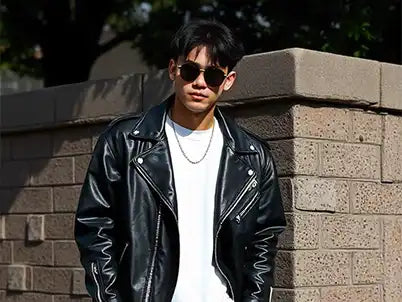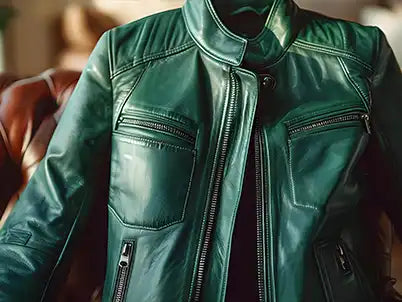If you’ve ever owned a varsity jacket, you know it’s more than just a random outfit. It’s a story stitched into fabric and leather. From the wool body to the leather sleeves, and from the ribbed cuffs to the inner lining, every detail speaks to its heritage. But have you ever wondered how varsity jackets are constructed and why they’ve held their place in fashion for over a century?
Let’s break down the entire process, from the raw materials to the finished piece, so you’ll not only appreciate your jacket more but also understand what makes quality varsity jackets worth the investment.
What Is a Varsity Jacket?

Before diving into the making process, let’s clear the basics. Traditionally, it’s a wool-bodied, leather-sleeved jacket first worn by Harvard athletes in the 1860s. The big chenille letter stitched on the chest gave rise to the term letterman jacket. Fast-forward to today, and it has evolved beyond sports fields into everyday fashion, embraced by everyone from students to streetwear icons. You can know more about it by reading the ultimate guide on the varsity jacket.
Choosing the Right Materials for a Varsity Jacket

Materials set the tone for the jacket’s quality and feel. Wool is the classic choice for the body, while leather sleeves give it strength and structure. Still, modern makers often mix things up with cotton fleece or synthetics to cut costs.
If you’re digging deeper into materials for varsity jacket builds, you’ll hear debates about thickness, texture, and durability. Leather adds rugged charm, but it comes with price considerations. Wool keeps things traditional, while fleece makes it casual and lighter. The trick is finding the right balance between durability and comfort.
Real vs Faux Leather Varsity Jackets

This one comes down to preference and budget. Real leather is timeless, aging beautifully while offering durability. On the flip side, faux leather is affordable, easier to maintain, and lighter.
When you’re deciding between real vs faux leather varsity designs, think about purpose. Do you want an investment piece that softens and develops character over time? Or are you looking for something trendy that won’t weigh heavily on your wallet?
How Varsity Jackets Are Constructed

So, how to make a varsity jacket that stands the test of time? The construction process is both technical and creative:
- Taking accurate size measurements: Before any fabric is cut, precise chest, shoulder, sleeve, and waist measurements are taken to ensure the perfect size for the varsity jacket.
- Cutting the body and sleeves: Wool or fleece is cut for the torso, while leather or faux leather is cut for sleeves.
- Attaching the sleeves: This step determines how durable the arm seams will be.
- Adding lining: Stitched carefully inside for comfort.
- Ribbing and closures: Knitted trims and snap buttons are attached.
- Finishing touches: Patches, embroidery, or custom letters are sewn in.
Varsity Jacket Lining Options

The inside of a jacket often gets overlooked, but lining can make or break comfort. Varsity jacket lining options usually include:
- Quilted lining for insulation and warmth.
- Cotton lining for a breathable, lightweight feel.
- Satin or polyester lining for a smooth finish and a bit of luxury.
What is the Cost to Make a Varsity Jacket

Ever thought about the cost to make a varsity jacket? It varies wildly. A mass-produced version made with synthetics might cost as little as $30–$50 to produce. A handmade, leather-sleeved piece with custom embroidery can run into the hundreds before it even hits the store. When you see one priced at $300 or more, a big chunk goes into labor, leather quality, and craftsmanship.
Varsity Jacket DIY: Can You Make Your Own?

Believe it or not, varsity jacket DIY projects have been gaining popularity. People buy blank jackets and customize them with patches, embroidery, or even fabric paint. It’s a cool way to make a piece uniquely yours.
Still, sewing one from scratch is no easy task. The mix of wool, leather, and ribbed trims requires some serious skill and equipment. If you’re asking how to make a varsity jacket at home, it’s probably easier to start with a ready-made blank canvas and add your flair.
Why Quality Matters in Varsity Jackets

If you want something that lasts, focus on quality varsity jacket materials. Wool weight, leather thickness, and even the type of stitching all matter. Jackets built with shortcuts might look good for a year, but they’ll sag, peel, or lose their shape sooner than you’d like.
Pay attention to details like double stitching, sturdy snap buttons, and ribbing that doesn’t feel too flimsy. These small things are what separate premium jackets from cheap knock-offs.




















